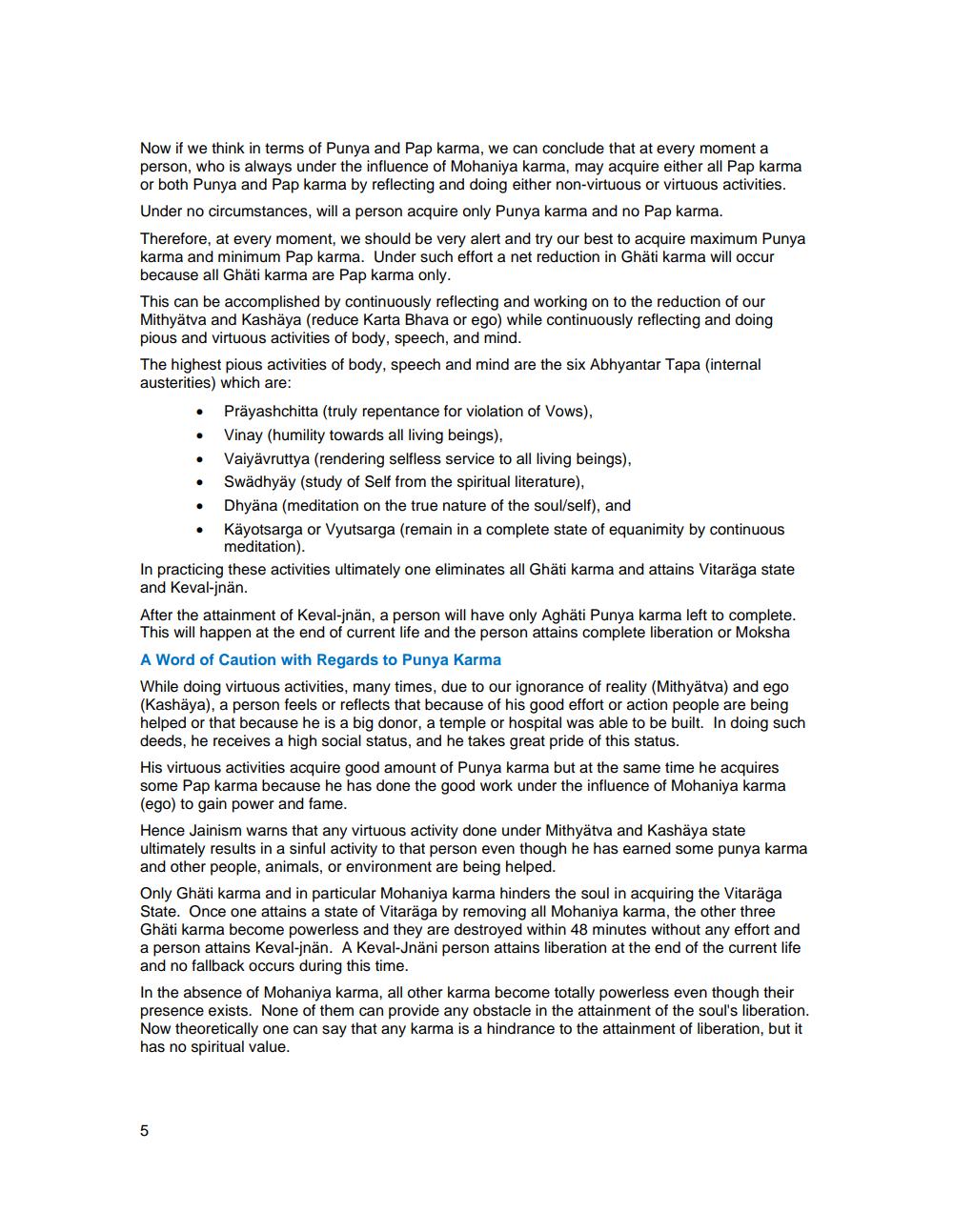Book Title: Jain Karma Philosophy Punya and Pap Karma Author(s): Pravin K Shah Publisher: JAINA Education Committee View full book textPage 5
________________ Now if we think in terms of Punya and Pap karma, we can conclude that at every moment a person, who is always under the influence of Mohaniya karma, may acquire either all Pap karma or both Punya and Pap karma by reflecting and doing either non-virtuous or virtuous activities. Under no circumstances, will a person acquire only Punya karma and no Pap karma. Therefore, at every moment, we should be very alert and try our best to acquire maximum Punya karma and minimum Pap karma. Under such effort a net reduction in Ghati karma will occur because all Ghati karma are Pap karma only. This can be accomplished by continuously reflecting and working on to the reduction of our Mithyatva and Kashaya (reduce Karta Bhava or ego) while continuously reflecting and doing pious and virtuous activities of body, speech, and mind. The highest pious activities of body, speech and mind are the six Abhyantar Tapa (internal austerities) which are: * Prayashchitta (truly repentance for violation of Vows), * Vinay (humility towards all living beings), Vaiyavruttya (rendering selfless service to all living beings), Swadhyay (study of Self from the spiritual literature), Dhyana (meditation on the true nature of the soul/self), and * Kayotsarga or Vyutsarga (remain in a complete state of equanimity by continuous meditation). In practicing these activities ultimately one eliminates all Ghati karma and attains Vitaraga state and Keval-jnan. After the attainment of Keval-jnan, a person will have only Aghati Punya karma left to complete. This will happen at the end of current life and the person attains complete liberation or Moksha A Word of Caution with Regards to Punya Karma While doing virtuous activities, many times, due to our ignorance of reality (Mithyatva) and ego (Kashaya), a person feels or reflects that because of his good effort or action people are being helped or that because he is a big donor, a temple or hospital was able to be built. In doing such deeds, he receives a high social status, and he takes great pride of this status. His virtuous activities acquire good amount of Punya karma but at the same time he acquires some Pap karma because he has done the good work under the influence of Mohaniya karma (ego) to gain power and fame. Hence Jainism warns that any virtuous activity done under Mithyatva and Kashaya state ultimately results in a sinful activity to that person even though he has earned some punya karma and other people, animals, or environment are being helped. Only Ghati karma and in particular Mohaniya karma hinders the soul in acquiring the Vitaraga State. Once one attains a state of Vitaraga by removing all Mohaniya karma, the other three Ghati karma become powerless and they are destroyed within 48 minutes without any effort and a person attains Keval-jnan. A keval-Jnani person attains liberation at the end of the current life and no fallback occurs during this time. In the absence of Mohaniya karma, all other karma become totally powerless even though their presence exists. None of them can provide any obstacle in the attainment of the soul's liberation. Now theoretically one can say that any karma is a hindrance to the attainment of liberation, but it has no spiritual value.Page Navigation
1 ... 3 4 5
